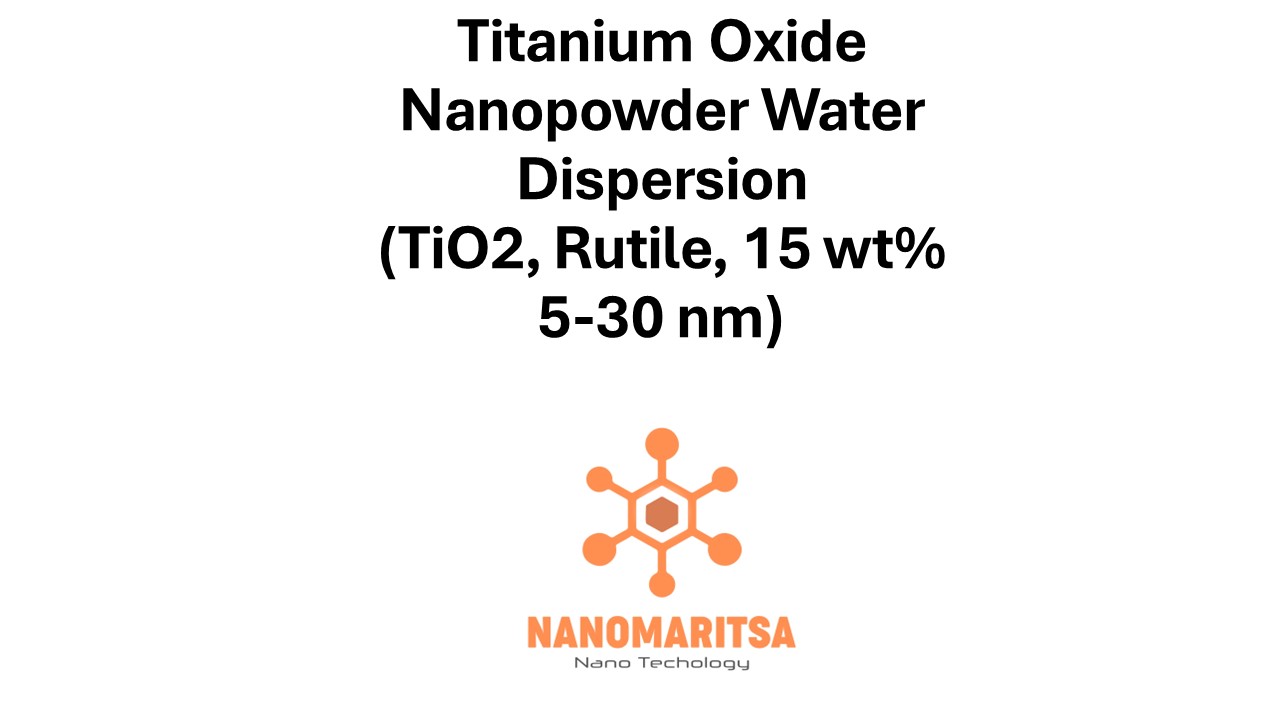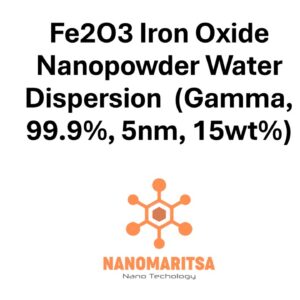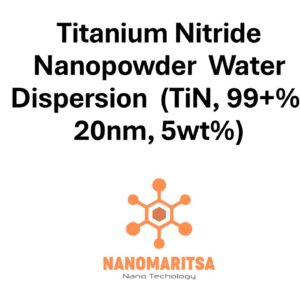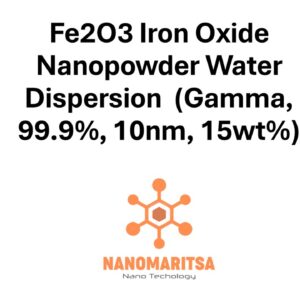Metal Oxide Dispersions
Titanium Oxide Nanopowder Water Dispersion (TiO2, Rutile, 15 wt%, 5-30 nm)
€96.00
CompareTitanium Oxide Nanopowder Water Dispersion (TiO₂, Rutile, 15 wt%, 5–30 nm) is a water-based suspension of titanium dioxide nanoparticles in the rutile crystalline form. Below is a detailed explanation of its composition, properties, and applications:
1. Composition:
- Titanium Dioxide (TiO₂):
- A widely used metal oxide with applications in coatings, pigments, and photocatalysis.
- Rutile Phase:
- The rutile phase of TiO₂ is characterized by:
- Higher refractive index compared to anatase.
- Excellent thermal and chemical stability.
- Lower photocatalytic activity, making it ideal for durable applications.
- The rutile phase of TiO₂ is characterized by:
- Nanoparticles (5–30 nm):
- Ultra-fine particles with an average size range of 5 to 30 nanometers.
- Nano size ensures enhanced optical and reactive properties.
- 15 wt%:
- 15% by weight of the dispersion consists of TiO₂ nanoparticles; the remaining 85% is water.
- Water Dispersion:
- Aqueous medium that ensures even particle distribution, making it ready-to-use for various applications.
2. Key Properties:
- High Refractive Index:
- Provides exceptional light scattering, making it ideal for UV shielding and optical enhancement.
- Thermal Stability:
- Withstands high temperatures without decomposition or phase change.
- Hydrophilic Surface:
- Disperses easily in water-based systems.
- Low Photocatalytic Activity:
- The rutile form minimizes oxidative degradation, making it safer for coatings and cosmetics.
- Uniform Dispersion:
- Maintains a stable and even distribution of nanoparticles in water.
- Durability:
- Resistant to chemical and environmental degradation, making it suitable for outdoor and industrial applications.
3. Applications:
- UV-Resistant Coatings:
- Used in transparent and durable coatings for buildings, automotive, and outdoor structures.
- Sunscreens and Cosmetics:
- Provides effective UV protection with a non-reactive and safe formulation.
- Optical Materials:
- Enhances brightness and opacity in paints, plastics, and textiles.
- Pigments:
- Adds whiteness and opacity to a variety of products such as paints, inks, and ceramics.
- Photocatalysis:
- Applicable in self-cleaning materials, air purification, and water treatment systems.
- Composite Materials:
- Enhances mechanical strength and thermal resistance in polymers, ceramics, and metals.
- Energy Applications:
- Used in dye-sensitized solar cells (DSSCs) and other photovoltaic systems.
- Electronics:
- Serves as a dielectric material and optical layer in microelectronics and sensors.
4. Advantages:
- Pre-Dispersed:
- Ready-to-use formulation saves preparation time and ensures uniform application.
- Environmentally Friendly:
- Water-based formulation avoids the use of harmful organic solvents.
- Enhanced Performance:
- Nano-sized particles improve surface interactions, UV protection, and thermal stability.
- Versatile:
- Suitable for a wide range of industrial, cosmetic, and environmental applications.
- Stable Rutile Phase:
- Offers longevity and resistance to wear and environmental stress.
5. Handling and Storage:
- Handling:
- Stir or shake well before use to ensure uniform nanoparticle distribution.
- Use protective gloves and eyewear to avoid direct contact.
- Storage:
- Store in a cool, dry place away from direct sunlight and extreme temperatures.
- Avoid freezing or prolonged exposure to high heat, as these can destabilize the dispersion.
- Safety:
- While TiO₂ is generally considered non-toxic, avoid inhalation of mist and prolonged exposure to skin and eyes.
This TiO₂ water dispersion combines the stability of the rutile phase with the enhanced properties of nano-sized particles. Its versatility makes it suitable for coatings, cosmetics, composites, and energy applications. The 5–30 nm size range allows for a balance between surface reactivity and stability, making it a valuable material in both industrial and scientific fields.
SKU: MN07NPD0106
Category: Metal Oxide Dispersions
| Measurement (ml) | 100 ml, 500 ml, 1000 ml |
|---|
Related products
-
Metal Oxide Dispersions
Fe2O3 Iron Oxide Nanopowder Water Dispersion (Gamma, 99.9%, 5nm, 15wt%)
0 out of 5(0)SKU: MN07NPD0123€448.00 This product has multiple variants. The options may be chosen on the product page -
Metal Oxide Dispersions
Titanium Nitride Nanopowder Water Dispersion (TiN, 99+%, 20nm, 5wt%)
0 out of 5(0)SKU: MN07NPD0117€144.00 This product has multiple variants. The options may be chosen on the product page -
Metal Oxide Dispersions
Fe2O3 Iron Oxide Nanopowder Water Dispersion (Gamma, 99.9%, 10nm, 15wt%)
0 out of 5(0)SKU: MN07NPD0124€448.00 This product has multiple variants. The options may be chosen on the product page -
Metal Oxide Dispersions
Silicon Nitride Nanopowder Water Dispersion (Si3N4, 99+%,10wt%,15-30nm)
0 out of 5(0)SKU: MN07NPD0116€144.00 This product has multiple variants. The options may be chosen on the product page






